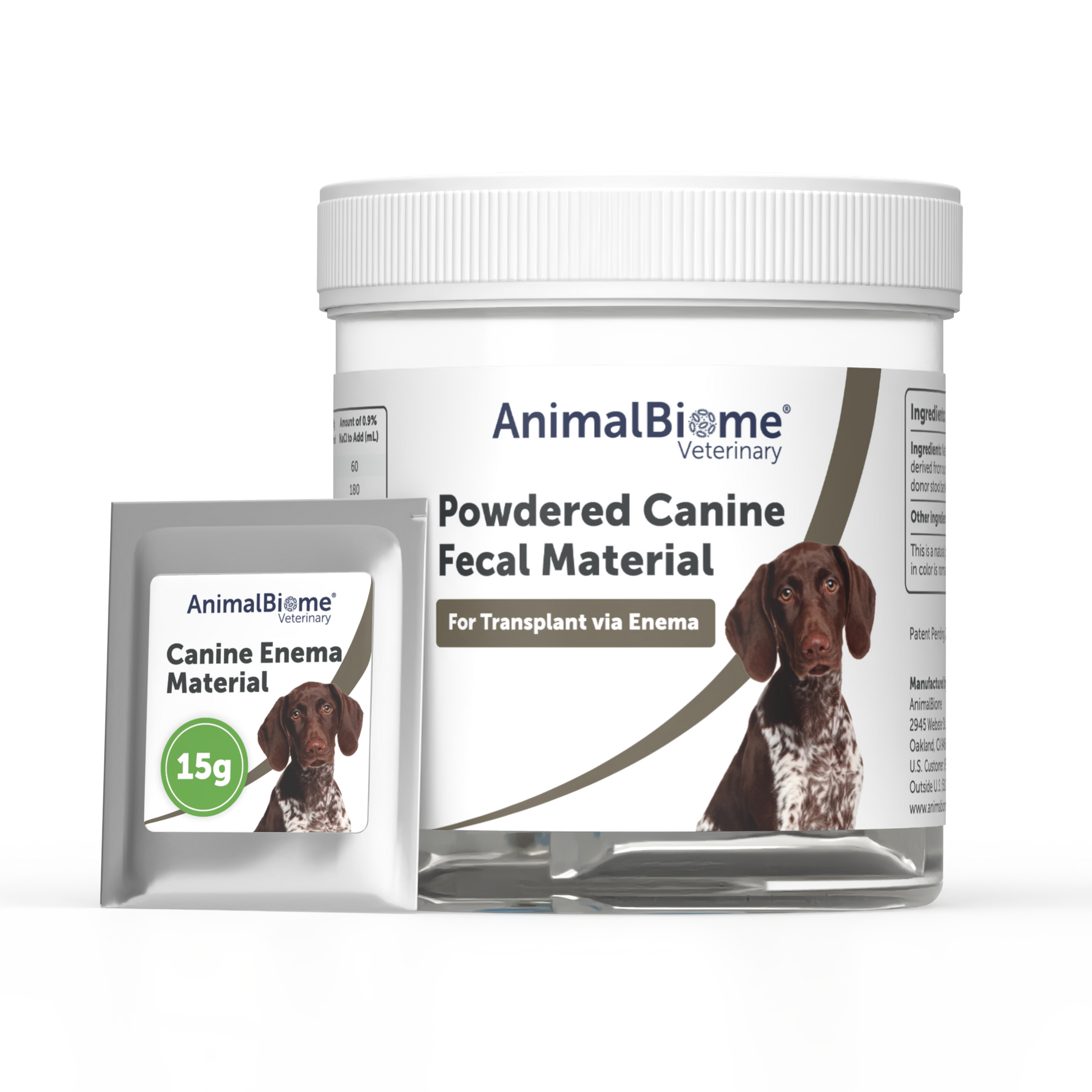If your dog seems uncomfortable or is urinating more often, you might worry about a urinary tract infection (UTI). But how do vets actually find out if your furry friend has a UTI?
Understanding the steps your vet takes can ease your mind and help you support your dog better. You’ll discover exactly how vets check for UTIs in dogs, what signs they look for, and what tests they use. Keep reading to learn what happens during a vet visit and how you can spot the warning signs early.
Your dog’s health depends on it!

Credit: pennypaws.com
Signs Of Uti In Dogs
Recognizing the signs of a urinary tract infection (UTI) in dogs is key to early treatment. Dogs cannot tell us when they feel pain or discomfort. Owners must observe changes in their pet’s health closely. UTIs can cause serious problems if left untreated.
Often, symptoms are subtle at first. Some dogs show clear signs, while others may only have mild changes. Knowing the common signs helps you act quickly. Early detection improves your dog’s comfort and recovery.
Common Symptoms To Watch
- Frequent urination, often in small amounts
- Straining or pain while urinating
- Blood in the urine, making it look pink or red
- Strong or unusual urine smell
- Accidents inside the house despite being trained
- Excessive licking of the genital area
- Cloudy or dark urine appearance
Behavioral Changes
Dogs with a UTI may act differently. They could seem tired or less active than usual. Some dogs become irritable or restless. Signs of discomfort include whining or pacing. Loss of appetite is common during infections. Watch for any unusual behavior that lasts more than a day.
Initial Vet Examination
The initial vet examination is the crucial first step in identifying a urinary tract infection (UTI) in your dog. This visit helps the vet gather important clues and decide on the best tests to confirm the diagnosis. Understanding what happens during this exam can make you feel more confident and prepared.
Physical Checkup Procedures
During the physical checkup, the vet will carefully examine your dog’s abdomen and genital area. They press gently to detect any pain, swelling, or unusual lumps that might signal a UTI. Checking your dog’s temperature is also important, as a fever often accompanies infections.
Observation doesn’t stop there. The vet will watch how your dog urinates, if possible, noting any signs of discomfort or frequent attempts to urinate. Have you noticed your pet licking its private areas more than usual? This behavior often points to irritation caused by infection.
Medical History Review
Before any tests, the vet will ask detailed questions about your dog’s recent health and behavior. They want to know about changes in drinking and urination habits, any accidents in the house, or signs of pain during bathroom trips.
Your answers help the vet understand the bigger picture. For instance, a history of bladder stones or previous infections can increase the risk of a UTI. Think about what you’ve observed over the last few days—sometimes small details, like your dog being less active or eating less, can be important clues.
Urine Sample Collection
Collecting a urine sample is a crucial step in diagnosing a urinary tract infection (UTI) in dogs. Without a proper sample, test results can be misleading, causing delays in treatment. Understanding how vets collect urine and why cleanliness matters can help you prepare and support your pet during this process.
Methods For Collecting Urine
Vets use several methods to collect urine from dogs, each with its own benefits and challenges. One common approach is free catch, where urine is collected midstream as your dog urinates. This method is simple and non-invasive but can sometimes include contaminants.
Another technique is catheterization, which involves inserting a small tube into the dog’s bladder to obtain a sterile sample. This method provides a clean sample but requires sedation or restraint and can be uncomfortable for your pet.
Lastly, cystocentesis is a precise way to collect urine directly from the bladder using a needle. It’s highly sterile and ideal for accurate testing, but it needs professional skill to avoid injury.
Importance Of Clean Samples
Clean urine samples are essential to get reliable test results. Contaminants like dirt, hair, or bacteria from the skin can cause false positives or hide infections. Have you ever wondered why vets ask you to avoid collecting urine from puddles or the floor? It’s because those samples are often contaminated.
Ensuring cleanliness means your dog’s urine sample reflects only what’s inside their urinary tract. This helps vets pinpoint the infection quickly and choose the right treatment. You can help by following your vet’s instructions carefully and keeping your dog calm during the collection.
Laboratory Urine Tests
Laboratory urine tests are essential for diagnosing urinary tract infections (UTIs) in dogs. Vets collect urine samples to analyze them in detail. These tests help detect bacteria, blood, and other signs of infection. They provide clear insights into your dog’s urinary health. Understanding these tests can ease your concerns and prepare you for vet visits.
Urinalysis Components
Urinalysis examines several key parts of the urine. It includes:
- Color and Clarity:Changes may indicate infection or other issues.
- Specific Gravity:Measures urine concentration to check kidney function.
- pH Level:Shows acidity or alkalinity, which affects bacterial growth.
- Protein:Presence may suggest inflammation or damage.
- Glucose:High levels can point to diabetes, which complicates infections.
- Microscopic Examination:Detects red and white blood cells, crystals, and bacteria.
Identifying Infection Markers
Infection markers in urine reveal the presence of a UTI. Vets look for:
- White Blood Cells (WBCs):Increased levels signal infection or inflammation.
- Bacteria:Their presence confirms an active infection.
- Red Blood Cells (RBCs):Indicate bleeding or irritation in the urinary tract.
- Protein:Elevated protein can result from infection-related damage.
- Nitrites:Some bacteria convert nitrates to nitrites, signaling infection.
These markers guide vets in diagnosing and treating your dog’s UTI effectively.
Urine Culture And Sensitivity
Urine culture and sensitivity testing is a key step vets use to accurately diagnose urinary tract infections (UTIs) in dogs. This test helps identify the specific bacteria causing the infection and determines which antibiotics will work best to treat it. Understanding this process can help you appreciate why vets sometimes take a few days to finalize treatment plans.
Detecting Bacterial Growth
After collecting a urine sample, the vet sends it to a lab where it’s placed on a special nutrient medium. This medium encourages any bacteria present to grow, making them easier to identify. The growth usually takes 24 to 48 hours, and it reveals whether bacteria are causing the infection or if something else might be wrong.
Have you ever wondered why vets don’t just rely on symptoms alone? This step ensures that the treatment targets the exact bacteria involved, avoiding guesswork. It’s a bit like catching the culprit red-handed rather than just assuming who did it.
Choosing Effective Antibiotics
Once the bacteria are identified, the lab tests several antibiotics against them to see which ones kill or stop their growth effectively. This sensitivity testing guides the vet in selecting the most appropriate medication for your dog’s specific infection. It’s important because some bacteria are resistant to common antibiotics, and using the wrong drug could prolong your dog’s discomfort.
This approach prevents unnecessary side effects and helps your dog recover faster. It’s worth asking your vet about the results if your dog’s UTI isn’t improving as expected. Knowing which antibiotics your dog responds to can save you time and stress down the road.

Credit: www.chewy.com
Imaging Techniques
Imaging techniques help vets see inside a dog’s body without surgery. These tools give clear pictures of the urinary tract. They help find signs of infection, stones, or blockages. Imaging is often done alongside other tests for a full diagnosis.
X-rays For Urinary Tract
X-rays provide a quick view of the bladder and kidneys. They show if there are stones or unusual shapes. Sometimes, vets use a special dye to highlight the urinary tract. This makes it easier to spot problems like blockages or tumors. X-rays are painless and fast, making them a common choice.
Ultrasound Applications
Ultrasound uses sound waves to create live images of the urinary tract. It shows the bladder wall thickness and any fluid buildup. Ultrasound can detect small stones or cysts that X-rays might miss. This method is safe and does not use radiation. Vets often use ultrasound to guide sample collection or treatment planning.
Additional Diagnostic Tools
When vets need to confirm a urinary tract infection (UTI) in dogs or rule out other issues, they rely on additional diagnostic tools beyond the usual urine tests. These tools help them get a clearer picture of your dog’s health and tailor the treatment accordingly. Understanding these options can prepare you for what your vet might suggest next.
Blood Tests Role
Blood tests are often used to check your dog’s overall health and detect if the infection has spread beyond the urinary tract. These tests reveal important details like kidney function and signs of inflammation or infection in the bloodstream.
For example, if your dog is feeling lethargic or showing signs of fever, a blood test can uncover hidden complications that a urine test might miss. It’s a way for vets to ensure they’re not just treating a simple UTI but also preventing more serious problems.
Cystoscopy Insights
Cystoscopy involves using a small camera inserted into the bladder through the urethra. This lets vets directly view the bladder lining, identify inflammation, tumors, or stones that might be causing symptoms similar to a UTI.
While it may sound intense, cystoscopy can be a game-changer for dogs with recurrent infections or unclear diagnoses. Seeing the bladder’s interior helps your vet decide on precise treatments and avoid unnecessary medications.
Interpreting Test Results
Interpreting test results is a crucial step after your dog undergoes screening for a urinary tract infection (UTI). Understanding these results helps you and your vet decide the best way to treat your furry friend. But what exactly do these results tell you about your dog’s health?
Confirming Uti Diagnosis
Test results from urine samples are the main way vets confirm a UTI. They look for bacteria, white blood cells, and crystals that shouldn’t be there. A high number of bacteria or white blood cells usually points to an infection.
Sometimes, vets use a urine culture to grow bacteria in a lab. This helps identify the exact type of bacteria causing the infection. Knowing this guides the choice of antibiotics, making treatment more effective.
Have you ever wondered why your dog’s symptoms don’t improve after initial treatment? It could be that the bacteria are resistant to the prescribed medicine, which is why culture tests matter so much.
Identifying Underlying Causes
Test results can also reveal if something else is causing your dog’s symptoms besides a simple infection. For example, crystals in the urine might mean your dog is prone to bladder stones.
Vets check for other signs like blood in the urine or abnormal pH levels. These clues help find issues such as bladder inflammation or kidney problems that need different care.
Understanding these underlying causes is key because treating only the infection might not solve the problem. Have you noticed recurring UTIs in your dog? That’s often a sign that something deeper needs attention.

Credit: www.chewy.com
Frequently Asked Questions
How Do Vets Diagnose A Uti In Dogs?
Vets diagnose UTIs by examining symptoms and testing a urine sample. They look for bacteria, blood, or crystals. Urinalysis and urine culture help confirm infection and guide treatment.
What Tests Do Vets Perform For Dog Utis?
Vets perform urinalysis and urine culture tests. Urinalysis checks urine properties, while culture identifies bacteria type. These tests ensure accurate diagnosis and effective treatment.
Can Vets Detect Utis Without Symptoms In Dogs?
Yes, vets can detect UTIs without obvious symptoms. Routine urine tests during check-ups may reveal infections early. Early detection helps prevent complications and promotes faster recovery.
How Long Does It Take For Vets To Confirm A Uti?
Urinalysis results are quick, usually within hours. Urine culture may take 2-3 days for bacterial growth. This timing helps vets choose the best antibiotics.
Conclusion
Veterinary care ensures your dog’s health with expert UTI checks. Early detection means quicker treatment and less discomfort for your furry friend. Visit the vet regularly to catch issues early. Stay informed about your dog’s health needs. Trust professionals to provide the best care.
Understanding signs of UTI helps in faster treatment. Protect your dog’s well-being by acting promptly. Regular vet visits keep your dog healthy and happy. Prioritize your dog’s health and comfort. Prevention and early action are key. Keep your dog active, hydrated, and loved.
Your dog’s health matters.







